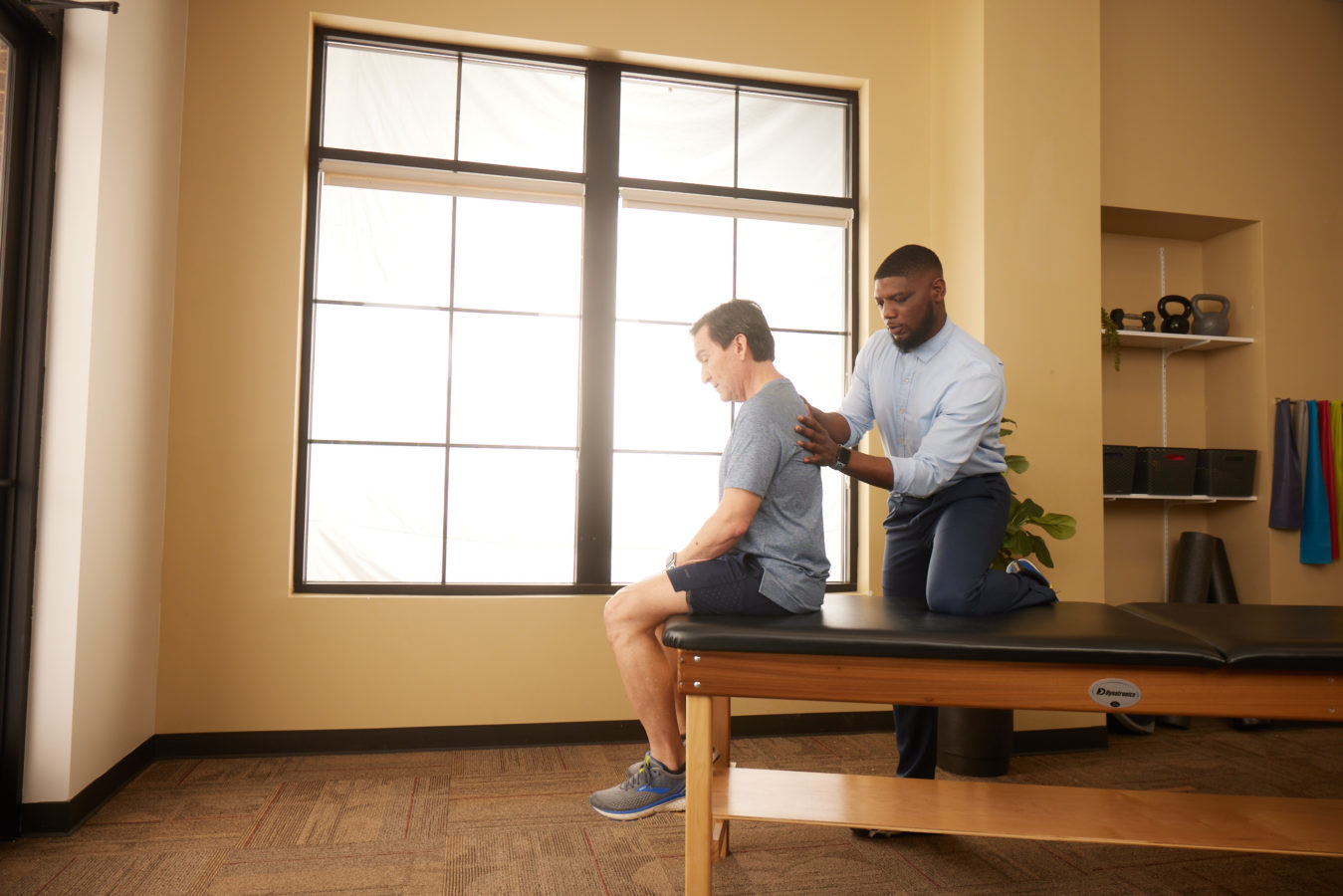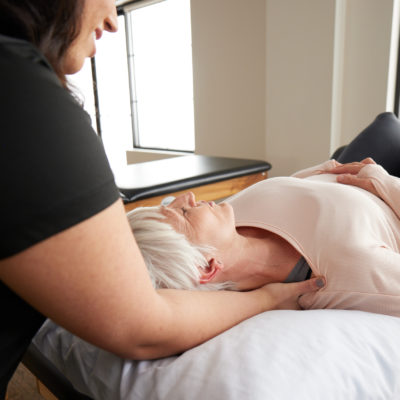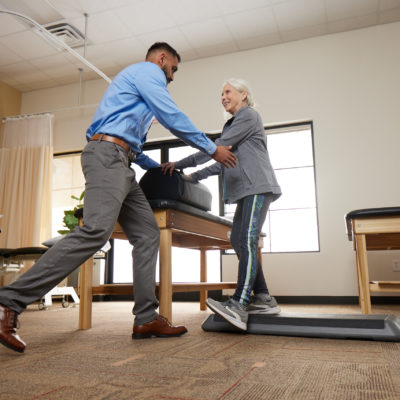
Caused by natural aging or injury, degenerative disc disease (DDD) causes pain, stiffness, and limited function–all of which can be addressed with physical therapy.
The spine consists of soft compressible discs that separate your vertebrae. The discs act as shock absorbers for the spine, allowing it to flex, bend, and twist. Unfortunately, degenerative disc disease can occur with age or injury, most often occurring in the discs in the lower back (lumbar region) and the neck (cervical region) and causing pain, stiffness, loss of motion, and limited daily function.
Up to 85% of the population will show evidence of disc degeneration by age 50. A portion of these people will also develop back pain. You may notice back pain that radiates to the hips, aching while walking, and tingling or weakness in the legs or feet. Sitting, lifting, and twisting may increase symptoms. The majority of these cases can be resolved with physical therapy.


Physical therapy for degenerative disc disease limits the pain and increases function. Your degenerative disc disease treatment may include:

*Services are not available at every location. Visit our Locations page for more details.